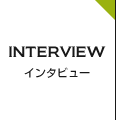Step into the electrifying world of online slots, where every spin offers a chance to ignite a thrilling win. It’s instant entertainment with massive jackpots waiting to be claimed at your fingertips.

The Evolution of Reel-Based Gaming
The evolution of reel-based gaming is a thrilling journey from clunky mechanical arms to dazzling digital frontiers. It began with the iconic Liberty Bell, using physical reels and simple paylines. The digital revolution transformed these games into complex software, introducing vibrant themes, bonus rounds, and immersive narratives. Today, the focus is on mobile optimization and sophisticated random number generators, ensuring fair play and captivating experiences on any device. This dynamic progression from tangible machinery to virtual entertainment showcases the industry’s relentless innovation, continually reshaping how players interact with the classic spin of the reels.
From Mechanical Lever to Digital Random Number Generator
The evolution of reel-based gaming is a journey from clunky mechanics to digital mastery. It began with the iconic Liberty Bell’s physical spinning reels, operated by a lever. The digital revolution transformed these into video screens, enabling intricate themes and bonus rounds. Today, online slots dominate, featuring immersive graphics and progressive jackpots accessible from anywhere. This shift from mechanical to digital platforms defines the **history of slot machine technology**, creating a dynamic and endlessly entertaining experience for players.
The Rise of Themed and Branded Video Games
The evolution of reel-based gaming from mechanical slot machines to digital video slots represents a profound technological shift. This transformation of online casino software introduced complex bonus rounds, immersive themes, and sophisticated random number generators, moving far beyond simple fruit symbols. The core appeal of anticipation and chance remains, but modern games are engineered experiences.
Today’s reel games are less about pure luck and more about player engagement through intricate narrative and feature design.
How Mobile Technology Transformed Player Access
The evolution of reel-based gaming is a journey from mechanical marvels to digital dominance. Originating with the Liberty Bell’s physical spinning reels, these games transitioned to video screens in the 1970s, enabling complex bonus features and immersive themes. Today, online slots dominate the market, utilizing random number generators for fairness and offering progressive jackpots that connect players globally. This digital transformation has solidified the enduring popularity of slot machines. Modern online slot features like cascading reels and interactive storylines continue to push boundaries, ensuring their central role in both casino floors and virtual platforms.
This shift from physical mechanisms to software algorithms fundamentally guaranteed game integrity and enabled unprecedented creative expansion.
Decoding Modern Game Mechanics
Decoding modern game mechanics reveals a shift towards systemic design and player agency. These interconnected systems, from physics engines to dynamic economies, create emergent gameplay where player choices have meaningful consequences. Player retention strategies often leverage progression loops and meta-game elements that extend engagement beyond a single session. This complexity often blurs the line between narrative and mechanics. Understanding these core game design principles is crucial for analyzing contemporary titles, as mechanics now frequently drive both the story and the long-term player experience directly.
Understanding Paylines, Ways to Win, and Megaways

Decoding modern game mechanics reveals a sophisticated blend of psychology and technology, where **player retention strategies** are intricately woven into every interaction. Designers now craft dynamic systems—from evolving battle passes to emergent narrative branches—that respond to player choice, creating deeply personalized and compelling loops. This intelligent design transforms simple play into sustained engagement, constantly challenging and rewarding the user in a seamless digital dance.
The Role of Volatility and Return to Player (RTP)
Decoding modern game mechanics reveals how developers craft compelling digital experiences. It’s about understanding the rules and systems that drive player engagement, from the satisfying loop of a battle royale’s shrinking circle to the intricate resource management of a city-builder. This analysis is key for appreciating the core gameplay loop that keeps us coming back. By peeling back these layers, we see the deliberate design choices that transform simple interactions into memorable adventures.
Bonus Rounds, Free Spins, and Interactive Features
Decoding modern game mechanics reveals a sophisticated layer of **player engagement strategies** that extend far beyond simple points and levels. Contemporary titles employ **procedural generation** for endless replayability, **metaprogression systems** that reward long-term investment, and **dynamic difficulty adjustment** to maintain optimal flow. These mechanics are meticulously designed to create compelling feedback loops, transforming gameplay into a deeply satisfying cycle of challenge, reward, and mastery that keeps players returning.
A Guide to Popular Game Varieties
Imagine a world where every roll of the dice tells a different story. This guide unlocks the vibrant universe of popular game varieties, from the strategic conquests of eurogames to the cooperative tales of adventure games. It explores the quick, social laughter of party games and the deep, thematic immersion found in sprawling campaign titles. Whether you seek family-friendly fun or complex competitive strategy, this journey reveals the perfect game for every table and every moment, transforming an ordinary evening into an unforgettable narrative.
Classic Three-Reel Games for Purists
Understanding popular game varieties is essential for any player looking to elevate their experience. From the strategic depth of classic board games to the immersive worlds of modern video game genres, each category offers unique challenges and rewards. Exploring different types of games allows enthusiasts to discover new favorites and refine their skills across multiple platforms. This comprehensive overview of gaming categories provides the knowledge needed to navigate the vast and exciting landscape of interactive entertainment confidently.

Immersive Video Slots with Cinematic Stories
Navigating the world of games begins with understanding their core varieties. From the strategic depths of board games to the immersive realms of video games and the physical engagement of sports, each category offers a unique portal to challenge and joy. This essential knowledge is your first step toward finding your perfect play, a fundamental aspect of **choosing the right game genre**.
The true magic lies not in the platform, but in the shared experience of play, whether across a table or across continents.
Recognizing these distinct families empowers you to curate unforgettable moments of connection and competition.
Progressive Jackpots: Chasing Life-Changing Payouts
Understanding popular game varieties is essential for both new and seasoned players. From strategic board games and immersive video game genres to classic card games and physical sports, each category offers distinct mechanics and communities. Exploring these diverse gaming options allows individuals to find the perfect match for their interests and social preferences. This variety in gaming experiences ensures there is something engaging for every type of enthusiast, making it a cornerstone of modern entertainment culture.
The strategic depth of Eurogames, for instance, emphasizes resource management over direct conflict, appealing to players seeking thoughtful competition.
Strategies for Responsible Play

Strategies for responsible play transform gaming from a passive activity into a mindful practice. It begins with intentional time management, setting clear limits for sessions and taking regular breaks to maintain perspective. Financial mindfulness is equally crucial; establishing a strict entertainment budget prevents spending from escalating.
Perhaps the most powerful tool is honest self-reflection, regularly assessing whether play remains a source of joy or has become a compulsion.
Integrating these responsible gaming principles ensures the experience stays balanced, sustainable, and enjoyable within the wider context of a healthy lifestyle.
Setting Budget Limits and Session Timers
Responsible gaming strategies begin with a personal pact, a conscious decision to treat play as entertainment, not income. This mindset is the cornerstone of sustainable gambling habits. Set a strict budget before logging in and adhere to it as an unbreakable rule, using deposit limits and time reminders as your tools. *The true win is walking away content, regardless of the score.* Remember to schedule regular breaks, ensuring the activity remains a pleasant diversion within a balanced life.
Interpreting Game Information and Paytables
Strategies for responsible play are all about keeping gaming fun and under control. Setting a firm time and money budget before you start is the most effective responsible gambling technique. It’s also smart to take regular breaks, never chase losses, and always treat gaming as entertainment, not a way to make money. Remember, the goal is to enjoy the moment without letting it negatively impact your day or your wallet.
Recognizing the Importance of Play for Entertainment
Adopting a **responsible gambling framework** is essential for a sustainable and enjoyable experience. Set a strict budget and time limit before you begin, treating this as the cost of entertainment, not an investment. Always prioritize playing for fun, not as a solution to financial pressure. Utilize available tools like deposit limits and self-exclusion programs proactively. Crucially, never chase losses; a clear mindset is your most valuable asset for maintaining control and ensuring play remains a positive leisure activity.
Selecting a Reputable Digital Casino
Selecting a reputable digital casino is paramount for a secure and enjoyable experience. Begin by verifying valid licensing from authorities like the UKGC or MGA. Investigate the casino’s reputation through player reviews and its history of prompt payouts. A strong game library from top-tier software developers and clear, fair bonus terms are also vital indicators of a trustworthy platform. Always prioritize player safety and security through encryption and responsible gambling tools.
Q: What is the single most important check?
A: A valid gambling license from Hot Slice official game a recognized regulator, which ensures legal oversight and fair play.
Key Indicators of Licensing and Security
Selecting a reputable digital casino is the critical first step to a secure and enjoyable gaming experience. Your priority must be verifying the platform’s licensing and regulatory compliance from a recognized authority like the UKGC or MGA. This essential due diligence ensures fair play, robust data protection, and reliable financial transactions. Always prioritize secure online gambling platforms with transparent terms and positive player reviews to safeguard your funds and personal information effectively.
Evaluating Software Providers and Game Libraries
Selecting a reputable digital casino requires careful verification of its licensing and regulatory compliance. A primary factor is ensuring the platform holds a valid license from a respected authority like the UK Gambling Commission or the Malta Gaming Authority, which mandates fair play and financial security. Players should prioritize provably fair gaming algorithms and independent audits from organizations like eCOGRA. This due diligence is essential for a secure online gambling experience and protects personal and financial data.
Comparing Welcome Bonuses and Fair Wagering Terms

Selecting a reputable digital casino requires prioritizing security and fairness above all. Begin by verifying a valid gambling license from a strict jurisdiction like the UKGC or MGA, which mandates operational transparency. Critically, ensure the platform employs SSL encryption and partners with independently audited game developers for certified random outcomes. A trustworthy online gambling site will also feature clear terms, responsive customer support, and responsible gaming tools, providing a secure foundation for play.
Innovations Shaping the Future
Innovations shaping the future are converging across digital and physical realms. Breakthroughs in artificial intelligence and machine learning are automating complex analysis and decision-making. Simultaneously, advancements in quantum computing promise to solve problems currently intractable for classical computers. In the biological sciences, CRISPR gene editing and mRNA technology are revolutionizing medicine. Furthermore, the proliferation of the Internet of Things and smart infrastructure is creating more responsive cities and industries. These interconnected developments are fundamentally altering how we work, live, and address global challenges like climate change and healthcare.
The Integration of Skill-Based Bonus Elements
The future is being quietly built in labs and on screens, not with blueprints but with algorithms and atoms. From artificial intelligence revolutionizing healthcare by diagnosing diseases from scans to quantum computers unlocking new materials, the pace is breathtaking. Consider the silent hum of a server farm, where AI models learn to predict climate patterns, offering a digital lifeline for our planet.
This isn’t just change; it’s a fundamental rewrite of what’s possible.
The convergence of these technologies promises a world more connected, intelligent, and sustainable than we ever imagined.
Virtual Reality and Social Gaming Experiences
Innovations shaping the future are fundamentally altering our trajectory, with artificial intelligence and machine learning at the forefront. These technologies are not merely tools but partners in solving complex global challenges, from climate modeling to personalized medicine. The seamless integration of the digital and physical worlds through the Internet of Things is creating smarter, more responsive environments. This rapid technological advancement is the cornerstone of the next industrial revolution, driving unprecedented efficiency and unlocking human potential. To remain competitive, embracing these disruptive technologies is essential for future-proofing any enterprise.
Utilizing Cryptocurrency and Blockchain Technology
Future-defining innovations are converging to reshape our world. Artificial intelligence is augmenting human capability, while advancements in quantum computing promise to solve currently intractable problems. The future of sustainable energy is being unlocked through next-generation solar and grid-scale storage, crucial for a decarbonized economy. Simultaneously, breakthroughs in biotechnology, like CRISPR and mRNA platforms, are revolutionizing personalized medicine. Ultimately, the most profound impact will come from the integration of these technologies, not their isolated development. Organizations must therefore adopt a systems-thinking approach to leverage these powerful tools responsibly and effectively.



























